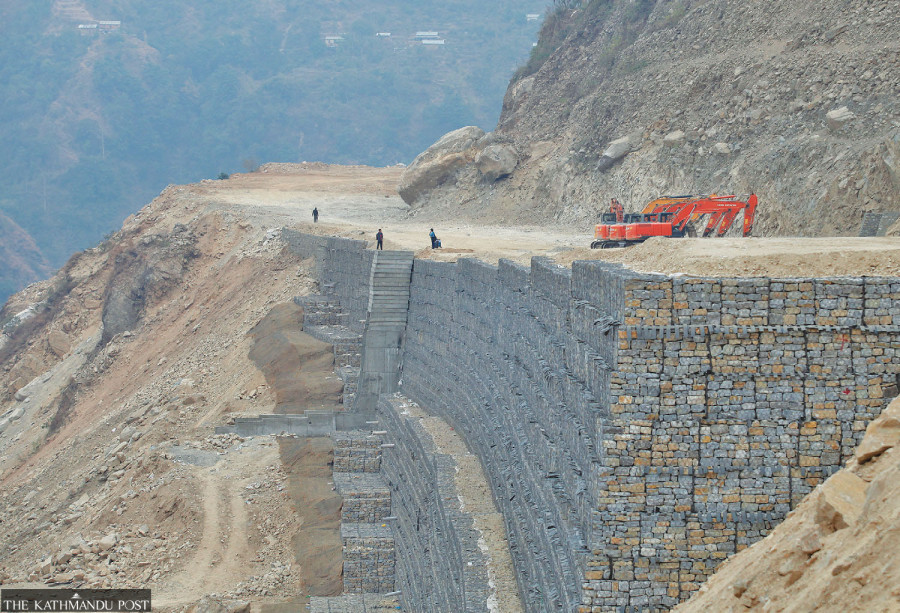Editorial
Better early
A strengthened monitoring, evaluation and payment system can ensure timely capital expenditure.
Torrential rains often signal the onset of the early monsoon month of Asar. But when it rains money on roads and project sites, we may consider that, too, to be a sign of the month’s onset. Each year, as the fiscal year enters the eleventh month, government agencies and contractors wake up from their slumber and pull up their socks to either make payments or work for the payments received. Last-minute capital spending repeats each financial year, exposing the inefficiency with which Nepal’s development sector operates. This model of “development” has a nomenclature of its own—Asarey Vikaas.
Thanks to the Asarey Vikas model, the roads that were bumpy until last night would have turned smooth and shiny this morning. Roads often become the sites for the manifestation of such an ill-planned model of development, leaving even the locals who have learnt not to expect anything from the government surprised at the sudden transformation of their roads. After all, the government has money to spend, and contractors have work to finish to claim that money. But such hurried spending has a major problem: The work being done is substandard. The road that was blacktopped overnight to meet the spending deadline of this financial year will hardly last until the end of the next financial year.
Between June 10 and July 15, 2020, the capital spending jumped by 17 percent in the last month of the fiscal year as the government rushed to increase such expenditure. Before the rush, the capital expenditure had been just 30 percent in the first 11 months of that fiscal year. In FY 2020/21, the government spent 21 percent of the total budget in a single month, between mid-June and mid-July. As of June 12, a little over a month before the end of FY 2023/24, capital expenditure was a mere 44 percent, which means that the government has failed to spend the budget allocated, making it difficult to meet the development targets.
Experts blame bureaucratic red tape for the delay in capital expenditure, as it takes months for even small amounts of bills to be cleared. Moreover, projects are often initiated randomly without ensuring the financial resources, leading to failure to move them forward. Previous governments tried to address the problem through budget implementation guidelines. Last year, the government made it mandatory to complete the call for bids and contract signing of projects by mid-November and begin work within 15 days of the signing. It said the plans and programmes that failed to meet this deadline would not get any budget. The 81-point budget implementation guideline has specific provisions on project completion timeline, payment, budget transfers and other matters of financial discipline.
The government cannot maintain a lacklustre attitude when it comes to capital expenditure, as it has a detrimental effect on the country’s overall development. It is time to streamline the monitoring, evaluation and payment systems to ensure that the government’s plans and programmes move forward and are completed within the stipulated deadline. The last-minute spending rush should become a thing of the past—which will also be a solid proof of the government’s commitment to improving people’s lives through judicious spending.




 13.12°C Kathmandu
13.12°C Kathmandu












%20(1).jpg&w=300&height=200)

